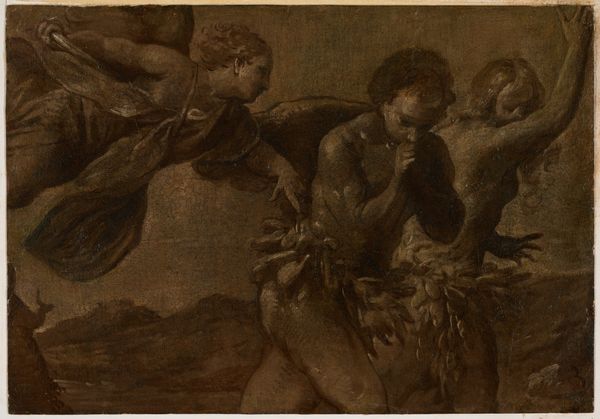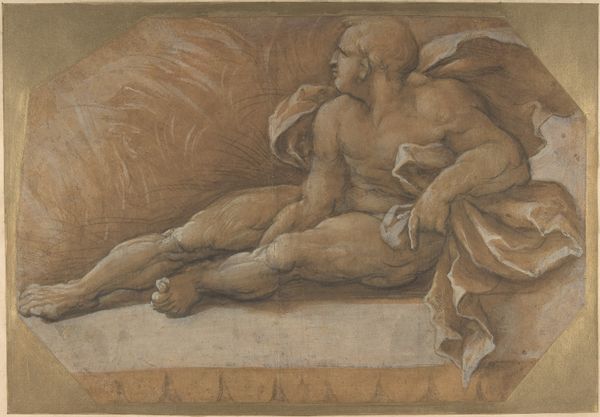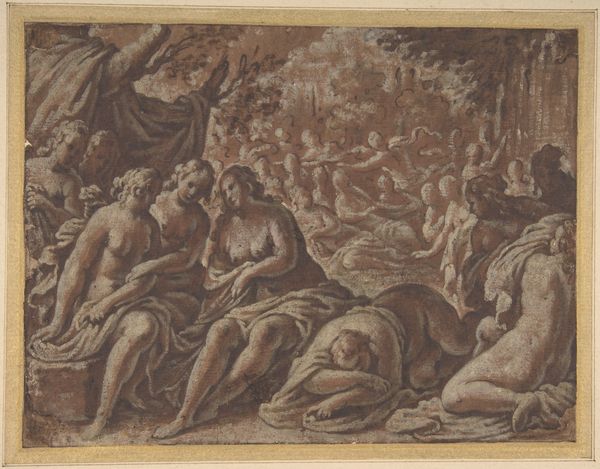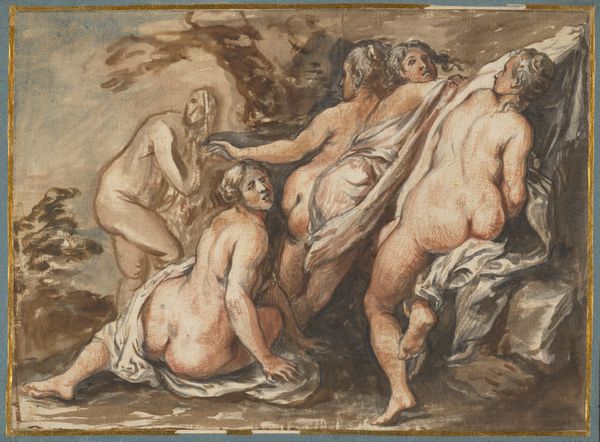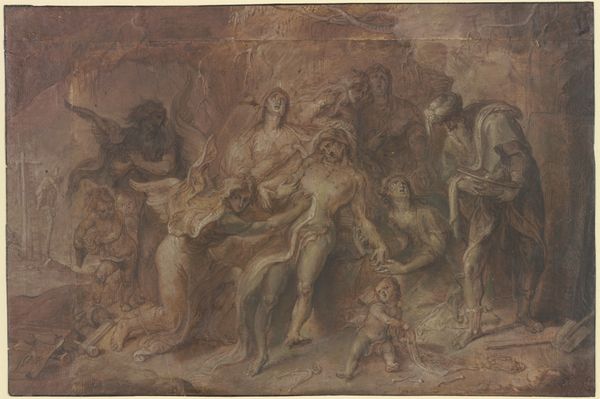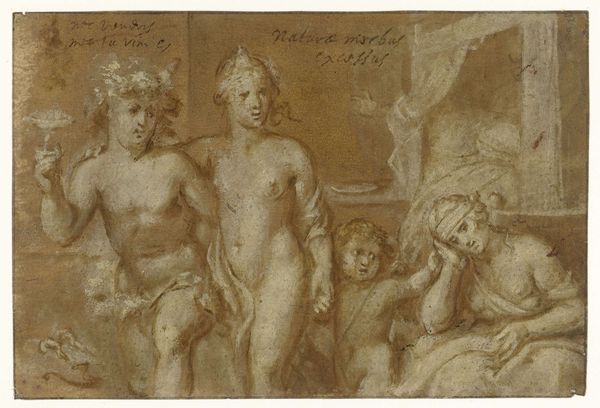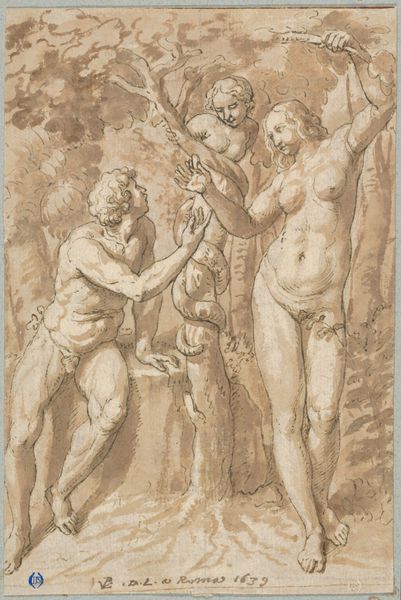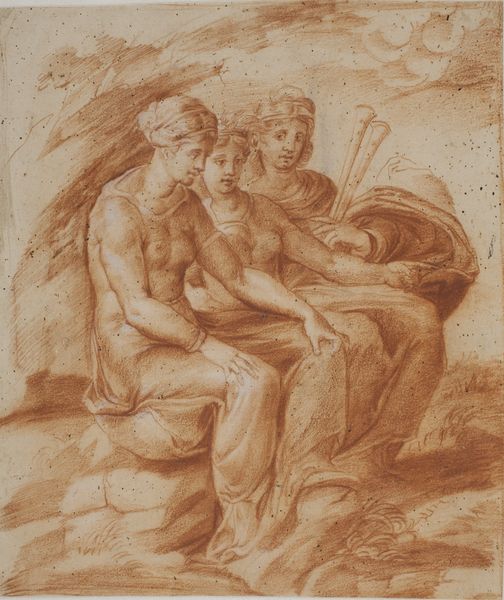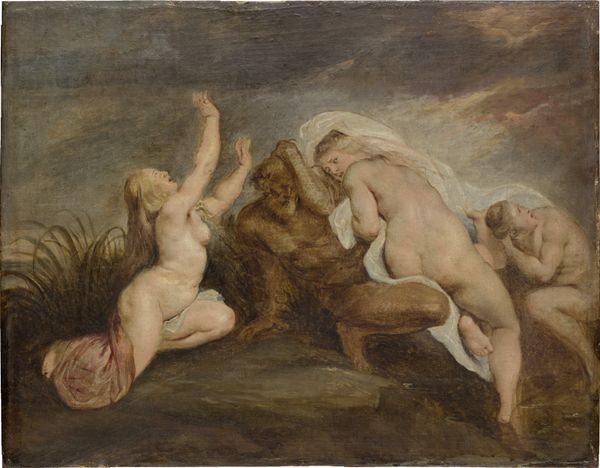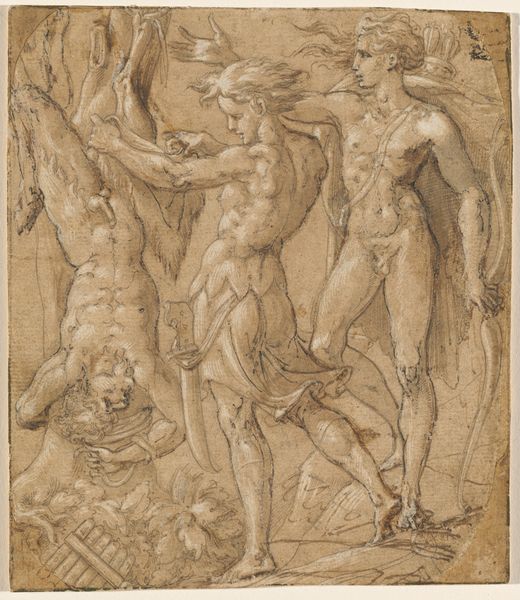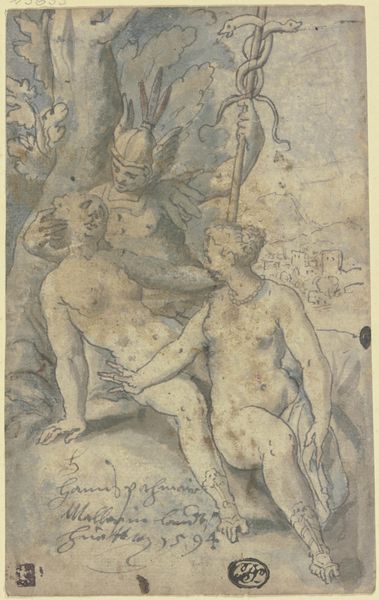
drawing, oil-paint, charcoal
drawing
baroque
oil-paint
charcoal drawing
figuration
oil painting
charcoal
history-painting
charcoal
nude
Dimensions: 9 1/4 x 13 3/4 in. (23.5 x 34.93 cm) (sight)16 3/8 x 20 11/16 in. (41.59 x 52.55 cm) (outer frame)
Copyright: Public Domain
Curator: This is "Adam Accepting the Apple from Eve," believed to have been created around the 17th century. It's currently held at the Minneapolis Institute of Art. What strikes you first about this composition? Editor: It’s somber. Almost monochromatic, relying heavily on shadow to create a sense of drama, even guilt, perhaps? You immediately notice the tangible quality of the figures formed by what appears to be brown oil-paint and charcoal. Curator: Absolutely. Considering it portrays the moment of the Fall, that subdued palette contributes powerfully to its narrative weight. The historical context frames this as a pivotal point of choice and consequence. It makes me think about how women, and Eve specifically, have been positioned through these types of images. Editor: The application of materials seems central to this discussion; note the visible brushstrokes, the blending of oil and charcoal. These choices were certainly deliberate. One may argue that they create the mood you spoke of—but I suggest that these choices could equally signal an exercise of labor intended for a patron. Curator: That’s interesting – labor being central to the patronage and perhaps to our understanding of this creation of a biblical scene. Consider the way the bodies are rendered, their positioning relative to each other. The apple is a symbolic item here; power, knowledge, and rebellion intersect. How might intersectional power dynamics manifest in this art work’s cultural interpretation and historical consumption? Editor: Yes! This intersection suggests a deeper look into how the material making informs the interpretation. How was charcoal sourced? The paint mixture of oil created? This tells us something about access and the social context within which these pieces come together. Curator: So, as we stand before this rendering of temptation and downfall, both the symbolic weight carried through centuries of interpretation and the tangible evidence of its creation using brushstroke and blending remind us that art offers a complex lens for seeing the historical representation of power, choice and creation itself. Editor: Indeed. We've delved into how artistic expression can reveal profound insights. Through this interaction with historical narratives and the materials used to create these visuals, it helps contextualize both subject and production.
Comments
No comments
Be the first to comment and join the conversation on the ultimate creative platform.
